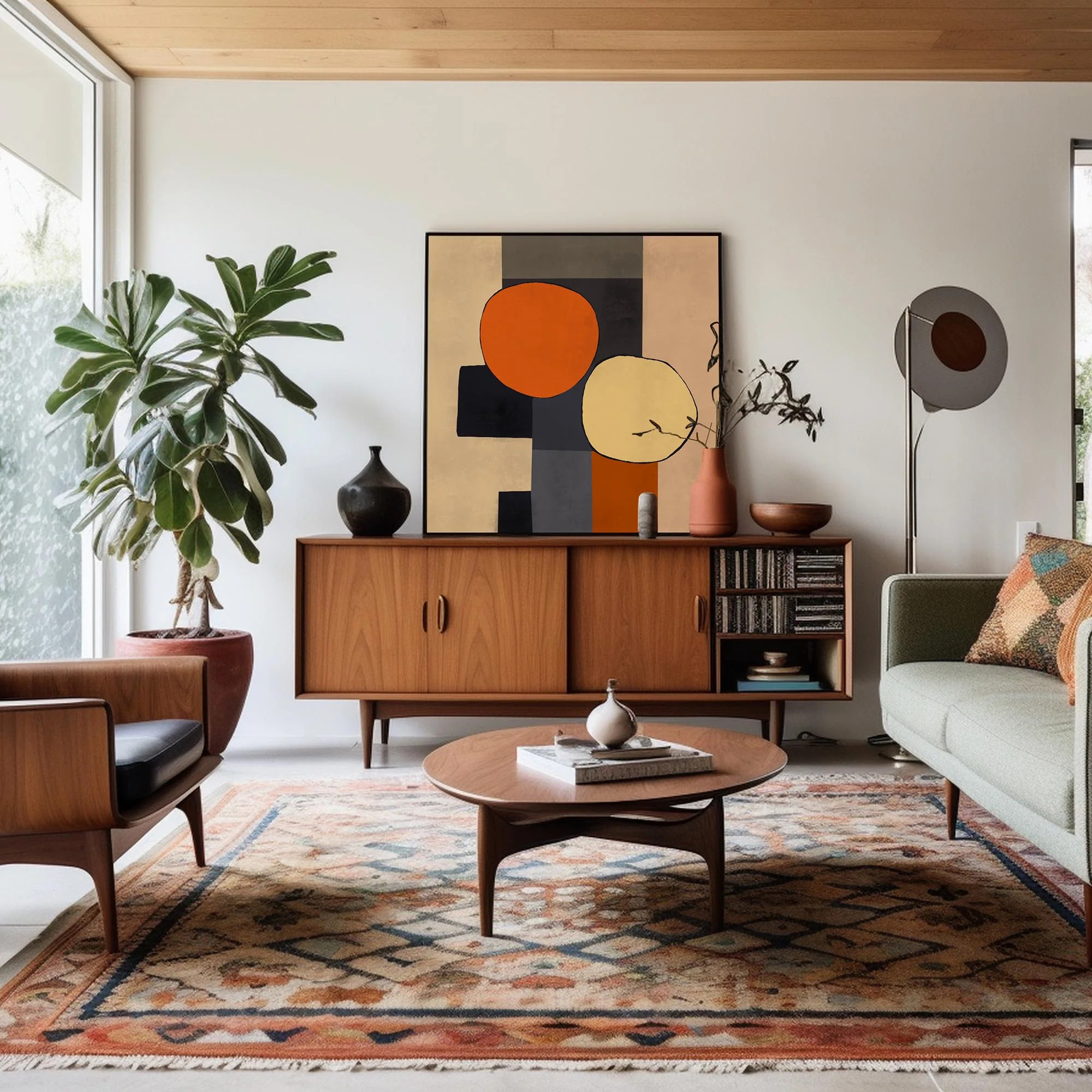Your basket is currently empty!
What is Mid Century Modern?


Mid-century refers to the design movement that emerged in the mid-20th century, roughly spanning the 1930s to the 1960s. This era transformed the standard approach to interior design which was heavily influenced by post-war optimism & bliss, technological advancements, and a desire for functional living spaces. It emphasized simplicity, clean lines, and organic forms, breaking away from ornate, extravagent and heavily decorated and embellished styles of previous eras. This interior design movement embraced new building materials like molded plywood, fiberglass, and tubular steel, which allowed designers to experiment with form and structure.
Mid-century modern style is characterized by its emphasis on functionality, simplicity, and seamless integration with nature. Key features include:
Armchairs epitomize mid-century modern design through their innovative use of materials and ergonomic forms. The Wassily Chair by Marcel Breuer, designed in 1925, features a tubular steel frame and canvas straps, showcasing a minimalist aesthetic that remains influential.
Similarly, the LCW Chair by Charles and Ray Eames, introduced in 1946, utilized molded plywood to create a comfortable and durable seating option, revolutionizing furniture design.



Mid-century modern sideboards are celebrated for their sleek profiles and multifunctionality. Often crafted from rich woods like teak or walnut, these pieces feature minimalist hardware and tapered legs, embodying the era’s emphasis on simplicity and practicality. Designers such as Florence Knoll integrated these elements into their creations, producing sideboards that serve both aesthetic and functional purposes.
The furniture of this era is distinguished by its organic shapes, clean lines, and innovative use of materials. Designers like Hans Wegner, a pioneer of the Danish Modern movement, crafted pieces that combined form and function seamlessly. The use of new materials, such as molded plywood and tubular steel, allowed for the creation of lightweight and durable furniture that was both practical and visually appealing.
Tables in mid-century modern design often feature minimalist forms and functional designs. The Tulip Table by Eero Saarinen, introduced in 1956, is a notable example, featuring a sleek, pedestal base that eliminates the need for traditional table legs, creating a clean and uncluttered look. These designs emphasize simplicity and practicality, aligning with the movement’s core principles.
Architecturally, mid-century modern design emphasizes open floor plans, integration with nature, and the use of new materials and technologies. Architects like Richard Neutra and Pierre Koenig designed homes with expansive glass walls and flat planes, creating a seamless connection between indoor and outdoor spaces. The use of steel and concrete allowed for innovative structural designs that were both functional and aesthetically pleasing.
Known for their groundbreaking furniture designs, including the Eames Lounge Chair and LCW Chair, which utilized innovative materials and manufacturing techniques.
Architect and furniture designer, renowned for the Tulip Chair and Tulip Table, which feature sleek, pedestal bases and minimalist forms.
A Danish designer, Hans Wegner played a vital role in the Danish Modern interior design movement, creating iconic chairs that combined form and function seamlessly.
Blending mid-century modern with traditional styles creates a rich and eclectic aesthetic. Here’s how you can achieve it:

While mid-century modern style peaked from the 1940s to the 1960s, the design movement continued into the 1970s. By this decade, design trends began shifting toward more eclectic and maximalist styles. The 70s saw an increased use of bolder patterns, warmer color palettes, and materials like rattan and shag carpets, diverging somewhat from the cleaner, more minimalistic ethos of mid-century modern design. That said, the foundations of mid-century modern continued to inspire many designers, blending seamlessly with the decade’s evolving aesthetics.
Decorating with a mid-century modern theme is about balance, simplicity, and embracing iconic design elements. Here are some tips:
Mid-century modern design has significantly influenced various aspects of culture, including television, film, and advertising. Its clean lines and functional aesthetics have been featured in numerous TV shows and movies, often used to evoke a sense of nostalgia or to symbolize sophistication and style. The movement’s emphasis on simplicity and functionality has also influenced contemporary design practices, leading to a resurgence of interest in mid-century modern aesthetics.
The principles of mid-century modern design continue to resonate in contemporary interiors. Its emphasis on functionality, simplicity, and integration with nature aligns with current trends in sustainable and minimalist design. The enduring appeal of mid-century modern furniture and architecture is evident in the continued production and popularity of iconic pieces, as well as in the design of new products that draw inspiration from this influential movement. Mid-century modern is popular as it bridges together the simplicity and traditionalism of art and design. It has left a lasting imprint on the world of interior design, interior spaces, homes, architecture and style. Its innovative use of materials, focus on functionality, and timeless aesthetic continue to inspire designers and captivate enthusiasts, ensuring its relevance for generations to come.